Your garden’s border is more than just a divider it’s the frame that defines your outdoor masterpiece. Whether you’re aiming to add curb appeal, create a vibrant entryway, or simply give your green space a polished look, a well-designed flower bed border can completely transform your garden’s aesthetic. From bold color schemes to low-maintenance designs, the possibilities are endless and exciting. In this article, we’ve rounded up 20 stunning border flower bed ideas that will not only enhance your landscape but also express your unique style. Get ready to be inspired by beautiful combinations, creative layouts, and practical tips that will make your garden’s edges truly unforgettable.
1. Classic English Border Garden
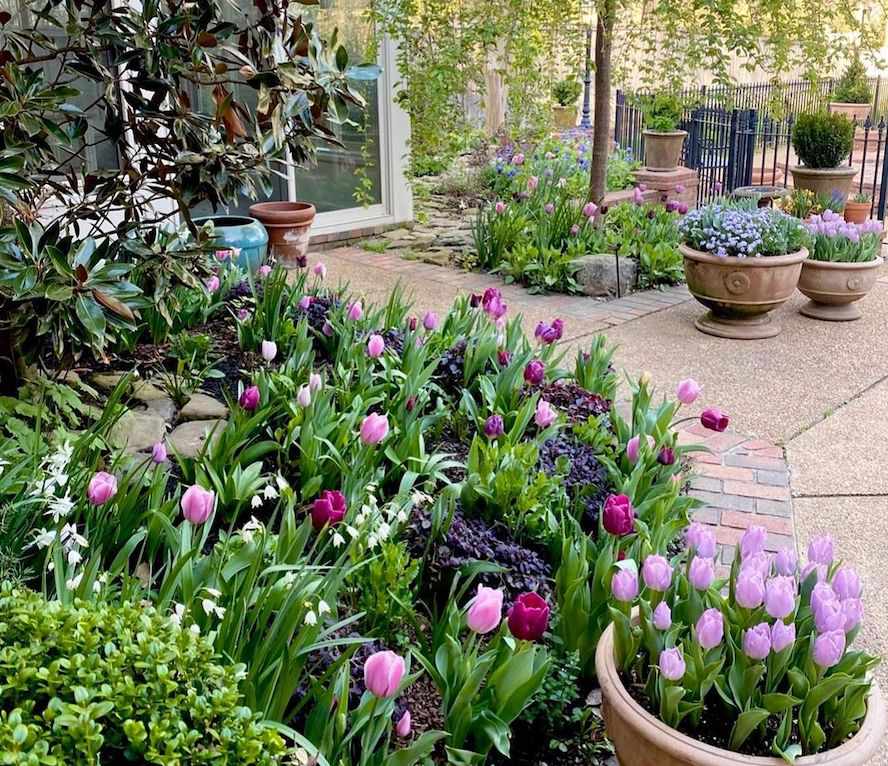
A timeless favorite, the English border flower bed overflows with a rich mix of perennials, shrubs, and climbing plants. Featuring blooms like delphiniums, foxgloves, and roses, this style creates a romantic, cottage-like charm. The key to a successful English border is layering—taller plants in the back, medium in the middle, and short ones up front. Using a mix of colors, textures, and heights ensures visual interest throughout the seasons, while maintaining a graceful and informal appearance.
2. Lavender and White Stone Border

Combining the soothing scent of lavender with the clean look of white stones creates an elegant and calming garden edge. Lavender not only attracts pollinators but also offers low-maintenance beauty that thrives in full sun. The white stones add a contrasting brightness that highlights the purple blooms. This border design is especially striking along walkways or driveways and works well in Mediterranean or minimalist garden themes. Plus, it’s drought-tolerant and perfect for eco-friendly landscapes.
3. Rainbow Color Gradient Bed
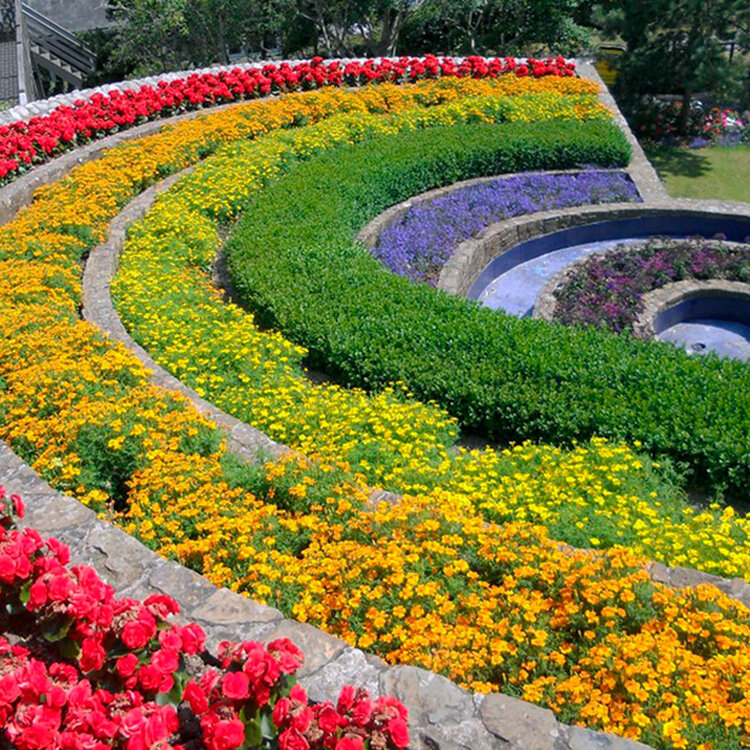
Create a captivating display by arranging flowers in a rainbow gradient—starting from red tulips or salvia and flowing through orange marigolds, yellow coreopsis, green foliage, blue cornflowers, and purple petunias. This colorful progression creates a magical border that draws the eye across your garden. It’s perfect for gardeners who love vibrant, playful spaces. To keep it cohesive, choose plants with similar growth habits and bloom times, ensuring the rainbow effect shines throughout the growing season.
4. Boxwood and Blooms Combo
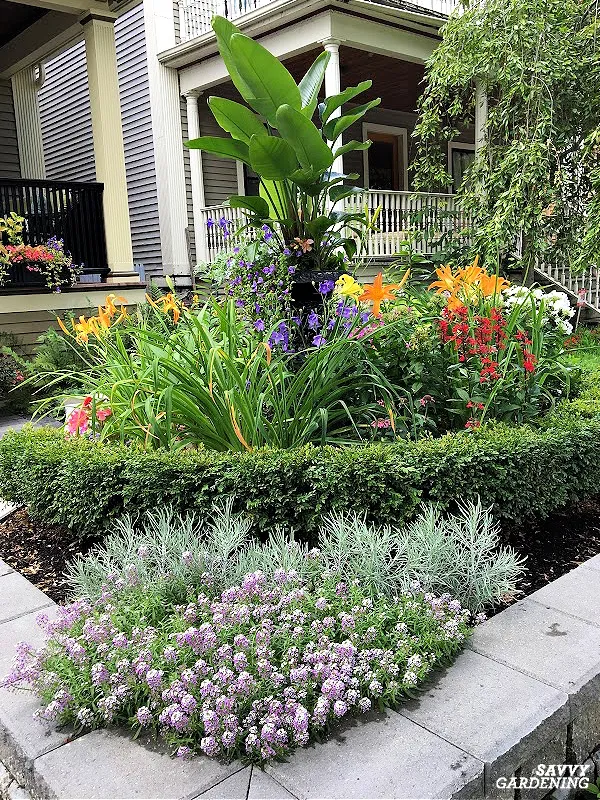
For a formal yet floral look, pair neatly trimmed boxwood hedges with vibrant flowering plants like geraniums, daisies, or impatiens. The evergreen boxwood provides year-round structure, while seasonal blooms add bursts of color. This combination works well in both traditional and contemporary gardens, especially around patios or entryways. You can shape boxwoods into elegant curves or geometric lines, creating a stunning contrast between order and natural beauty. It’s ideal for low borders with high impact.
5. Succulent Border with Gravel

If you love modern aesthetics and low-maintenance gardening, a succulent border is a game-changer. Combine varieties like echeveria, sedum, and hens-and-chicks along a bed lined with light gravel. The geometric shapes and muted tones of succulents offer unique texture, while gravel keeps weeds at bay and improves drainage. This border thrives in hot, dry climates and is ideal for xeriscaping. Plus, it adds a sleek, architectural touch to contemporary garden designs.
6. Wildflower Border for a Natural Touch
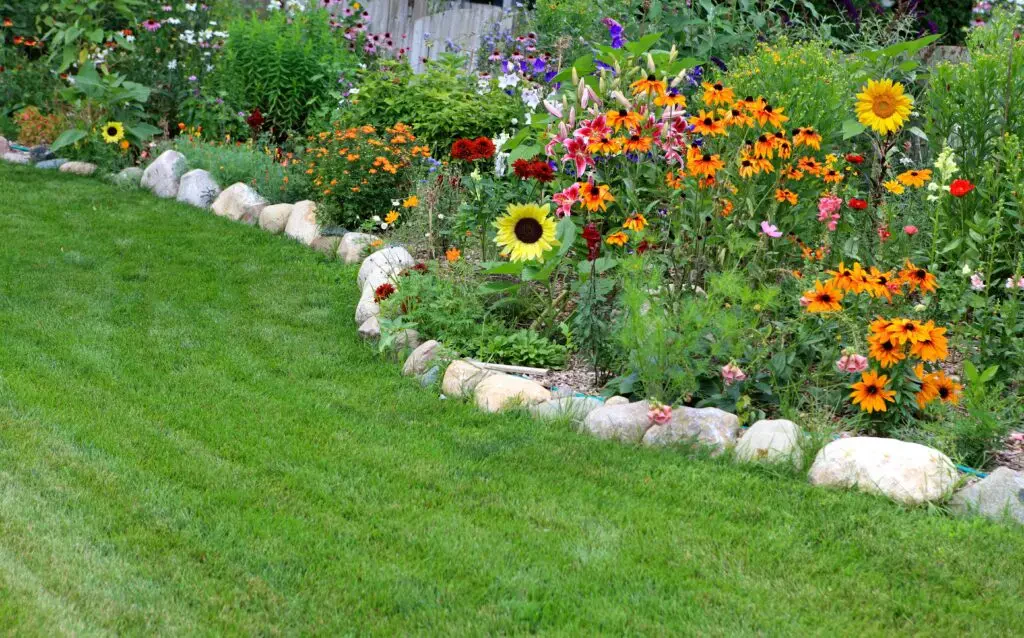
Want a border that looks like Mother Nature herself planted it? Choose a mix of native wildflowers like black-eyed Susans, coneflowers, bee balm, and yarrow. These low-maintenance blooms provide a pollinator paradise while delivering a laid-back, meadow-style charm. Wildflower borders are especially beautiful in rustic or cottage-style gardens and require less upkeep than manicured flower beds. The varying heights and spontaneous growth patterns make this style lively and full of natural character.
7. Monochrome Flower Border

Pick a single color and build a border around it for a sleek, cohesive look. For instance, a white-themed border can include lilies, daisies, phlox, and dusty miller. The simplicity of one color makes a bold, elegant statement and can tie into the color scheme of your home. This style is easy to manage and looks particularly stunning at dusk or in moonlight gardens. Choose plants with staggered bloom times for ongoing color.
8. Raised Wooden Planter Edging

Install raised wooden planters along your garden edges and fill them with vibrant blooms like pansies, begonias, and snapdragons. Raised beds improve soil quality and drainage, and they’re great for gardeners with mobility concerns. The wooden edging adds a rustic, crafted look while giving you clear lines between lawn and flower bed. You can also play with height by adding multiple tiers, making the border even more dynamic and space-efficient.
9. Tropical Flair Flower Border

Turn your garden into a tropical retreat with lush border plants like cannas, elephant ears, and hibiscus. Their large, dramatic leaves and bold flowers create a vacation vibe right at home. To enhance the tropical feel, edge the bed with small palms or decorative stones. This look works well in warm climates or during summer months with proper planning. Add a few tiki lights or bamboo features, and you’ve got a paradise border in your backyard.
10. Herb and Flower Fusion Border
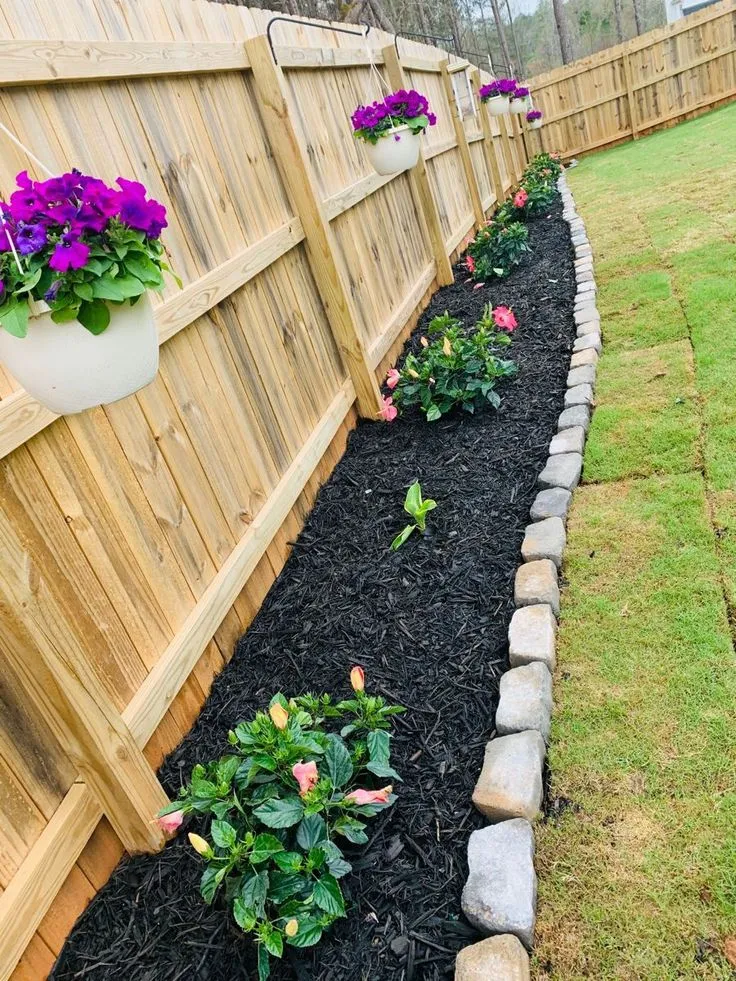
Combine beauty and utility with a border that mixes herbs and flowers. Think lavender, basil, rosemary, and chives paired with marigolds, calendula, and cosmos. This aromatic mix attracts pollinators, repels pests, and looks lovely all season long. It’s perfect for edging pathways near the kitchen or patio so you can snip fresh herbs while enjoying their visual appeal. The varying textures and scents make this border both practical and enchanting.
11. Curved Border with Annual Blooms

A gently curved border adds a soft, flowing feel to your landscape, and when filled with bright annuals like zinnias, petunias, and impatiens, it becomes a showstopper. Annuals offer nonstop color throughout the growing season and allow you to switch things up year after year. The curved shape makes your garden feel more dynamic and less boxy, guiding the eye and creating visual interest. This style is especially effective around patios, garden paths, or as a transition between lawn and landscape features.
12. Stone-Edged Cottage Garden Border
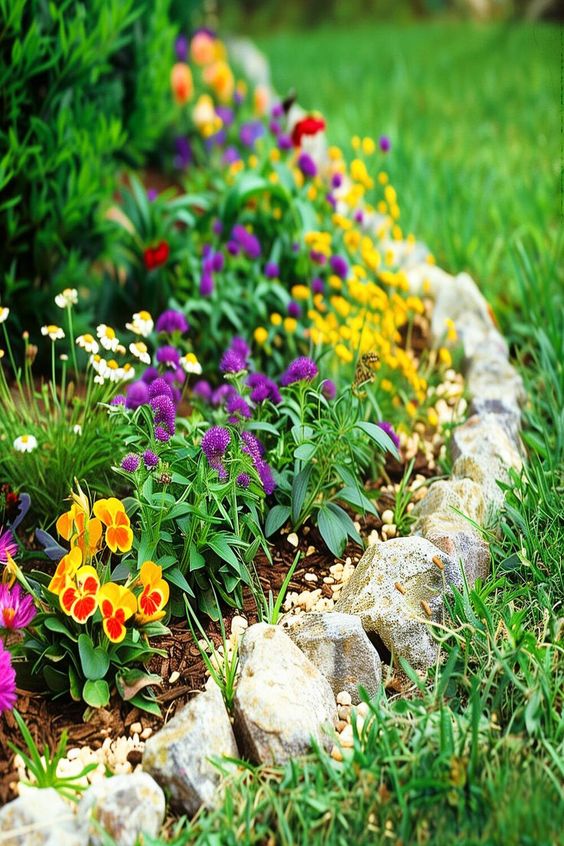
For that storybook charm, line your garden with a border of natural stones and fill it with traditional cottage favorites like hollyhocks, lupines, daisies, and sweet peas. The rough texture of stone adds rustic character while keeping soil and mulch contained. This type of flower bed offers layers of color and height, often blending wild beauty with structured planting. It’s perfect for older homes or those with romantic, vintage-inspired outdoor aesthetics.
13. Minimalist Grass and Flower Border

Create clean lines and peaceful harmony with a minimalist border that pairs ornamental grasses with a few select blooms. Use plants like blue fescue or Japanese forest grass alongside alliums, lilies, or tulips for a striking but subtle look. The flowing movement of grass brings calm energy, while a restrained color palette ensures a serene visual flow. This is perfect for modern or Zen-inspired gardens where simplicity and texture are key.
14. Butterfly-Friendly Flower Border
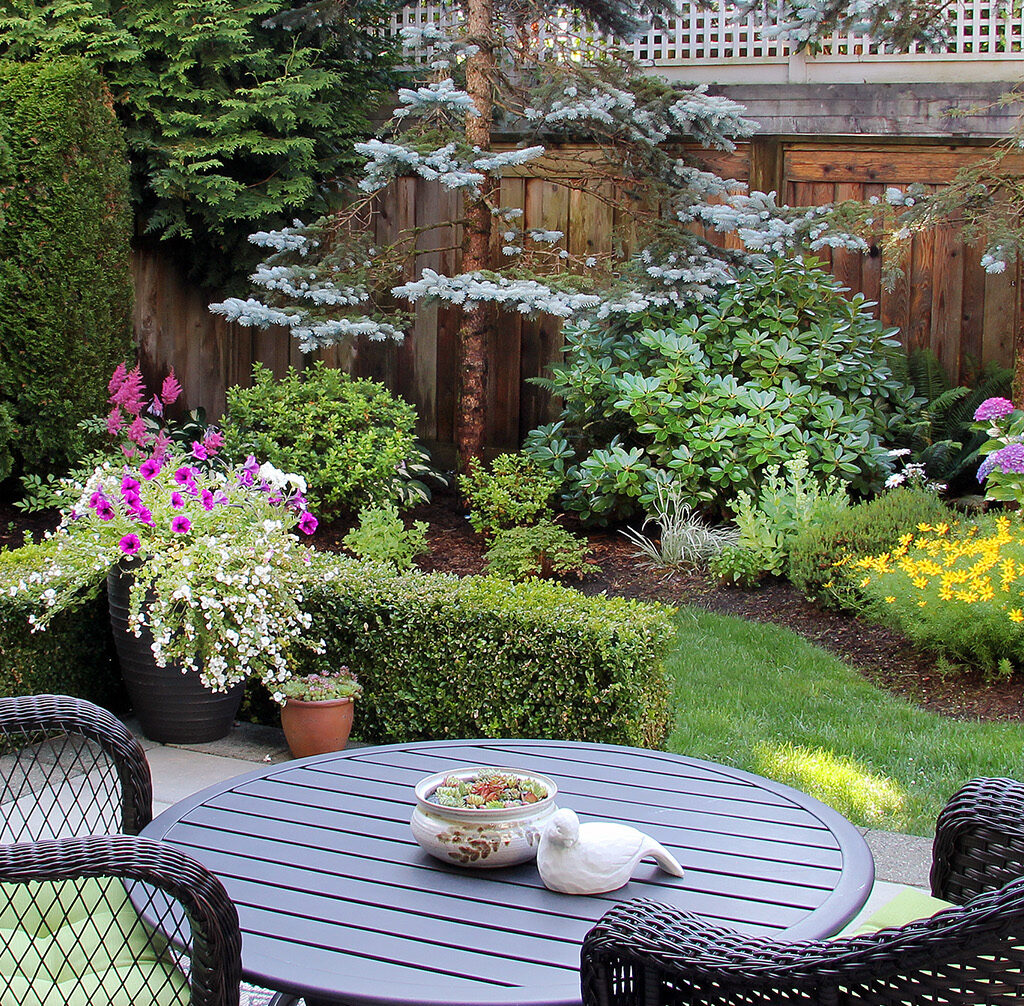
Design a border that becomes a haven for butterflies by planting nectar-rich flowers such as milkweed, butterfly bush, verbena, and asters. Not only does this bring your garden to life with fluttering visitors, but it also supports local ecosystems. Choose sunny spots with good airflow, and layer taller plants in the back with shorter, ground-covering flowers in the front. This border idea adds color, movement, and a sense of purpose to your garden while being easy to maintain.
15. Black and White Contrast Border

For a bold and sophisticated look, try a black and white themed flower border. Use black tulips, dark pansies, or Queen of Night irises paired with white lilies, alyssum, or snapdragons. This high-contrast combination pops against green foliage and adds drama to any garden setting. To enhance the effect, edge the bed with dark mulch or slate stones. This elegant color scheme is ideal for nighttime appeal or formal garden spaces that benefit from striking visuals.
16. Curated Color Block Border
Instead of mixing colors randomly, create defined color blocks within your flower border—such as one section of purple blooms, one of pink, and one of yellow. This modern twist on traditional planting looks especially striking when paired with neat edging and symmetrical design. Flowers like tulips, salvias, and echinaceas are perfect for bold color sections. The organized layout helps each hue stand out, making the border feel intentional and artistic rather than chaotic.
17. Edible Flower Border
Blend beauty and edibility by planting a border of edible flowers like nasturtiums, calendula, violets, borage, and chive blossoms. These blooms are not only colorful and attractive, but also great for garnishing salads, drinks, and desserts. Interplant with herbs and leafy greens for a mixed-use border that’s both functional and ornamental. This type of border is great near outdoor dining areas or patios, adding flavor and flair to your meals straight from the garden.
18. Brick-Edged Victorian Flower Bed
Recreate old-world elegance with a brick-edged flower border filled with classic Victorian-era plants like peonies, dahlias, pansies, and violas. The solid brick edge gives structure and timeless appeal, while the floral arrangement delivers full-bodied blooms and romantic charm. This design works beautifully along front walkways, garden paths, or near porches. It’s a great way to honor traditional styles while adding robust, long-lasting color and historical charm to your garden layout.
19. Spring Bulb Border Explosion
Start your season with a bang by planting a border loaded with spring bulbs—think tulips, hyacinths, daffodils, and crocuses. These early bloomers create an unforgettable burst of color just as winter fades. Layer the bulbs by planting different depths and varieties to ensure a long flowering period. You can underplant with low-growing ground covers like creeping thyme or phlox to maintain interest after the bulbs finish blooming. This border brings joyful anticipation every year.
20. Tiered Rock Garden Border
Maximize a sloped area or add elevation to a flat garden with a tiered rock garden border. Use stacked stone or retaining blocks to build levels and plant alpine flowers, succulents, or small perennials like dianthus, sedum, and creeping Jenny. This multi-layered look adds dimension and works well in small spaces. It’s especially effective in dry or sunny areas where drainage is essential. With proper planning, you’ll enjoy year-round texture and color in a compact, sculptural format.

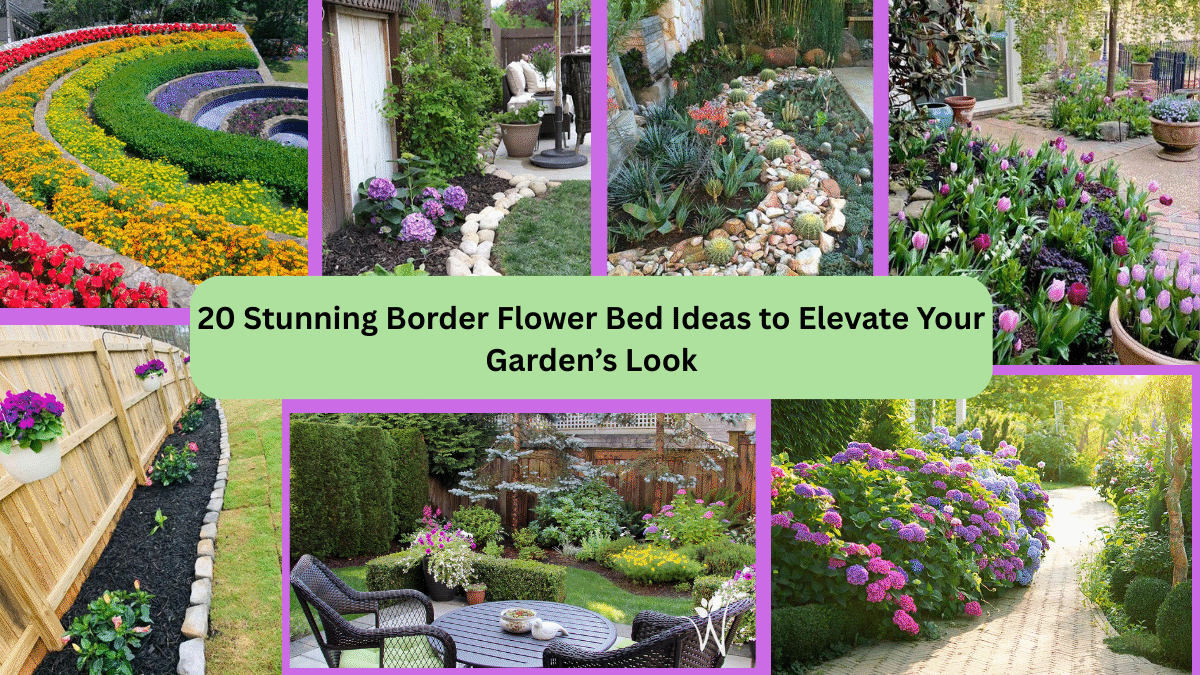



Leave A Comment